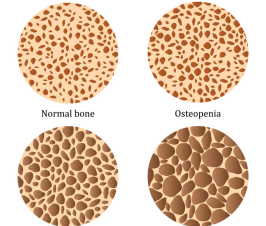Our culture places a lot of emphasis on sex appeal for women. Sexuality is an integral part of being human and sexual intimacy contributes to healthy relationships and individual well-being. However, for many women, the word “appeal” is not a term associated with sex. Many women lack desire for sex and/or have never experienced an orgasm, so sex for them is nothing more than an obligation required for establishing or maintaining a relationship. Studies show that at least 40% of women experience some sort of sexual dysfunction in their lifetime and the incidence is higher as women age.4
Psychosocial Issues With Sex Appeal
Reminders of sex appeal, the quality of being attractive in a sexual way, are everywhere since the media uses it prolifically. Unfortunately, ads predominantly objectify women in their promotions by portraying women in a degrading manner that supports the indulgence of men’s sexual desires rather than an even pattern of sexual content pertaining to both genders. As Lisa Wade, Ph.D., professor of Sociology at Occidental College, states in her analysis of how sex sells, “We’re selling men’s sexual subjectivity and women as a sex object. That is, the idea that men’s desires are centrally important and meaningful, and women’s are not (because women are the object to men’s subjectivity).”1
An additional conundrum of psychological sexual health is that most religious teachings regard sex as taboo, yet from the time we become aware of our surroundings we are constantly bombarded with media reminders illuminating the importance of sex appeal. Media connotations and easily accessible internet porn are creating a mass perpetuation of the idea that being hot is the highest aspiration for young women (be hot or be invisible). Increased participation in sex acts that place young teenage girls and young women into the unsatisfying objective role is highly destructive to meaningful relationships for both sexes.2, 3
Cultural influences play a very large role in sexual dysfunction and the topic is too large to discuss the negative consequences that include emotional and psychological injury, sexual violence, sexually transmitted infections, and/or unintended pregnancy.2, 3 There are, however, a plethora of additional aspects in this complex topic that we will focus on below, as well as various treatments for assisting women who are struggling with being in a committed relationship due to low libido and physiological obstacles to sexual function.
Female Sexual Dysfunction
Sexual arousal is a multifaceted physiological response of muscles, nerves, and vessels that is controlled by hormones and psychological influences.4Sexual disorders in women, aptly termed “female sexual dysfunction” (FSD), include low sexual desire, decreased sense of arousal, pain and discomfort upon vaginal contact or intercourse, diminished vaginal lubrication, and difficulty in achieving orgasm.5
Identifying causes of FSD is complex since beliefs, psychosocial factors, psychological influences, physiological function, and anatomical variances influence sexual function. For example, physiological reasons for FSD include chronic diseases, such as heart disease and diabetes that can reduce the ability to achieve vaginal lubrication, tissue arousal, and orgasm. Anatomical differences that illicit pain with penetration can severely impede sexual response.4 Lack of vascular and neuronal innervation in the clitoral area can hinder the clitoral response to stimulation.
Today’s stressful lifestyles requiring increased cortisol production can decrease the production of androgenic hormones, such as DHEA and testosterone (T), which play an important role in sex drive. Hormonal fluctuations in a woman’s reproductive cycle can significantly affect desire, arousal and ability to achieve orgasm. Many women can relate to having certain days of the month when they cringe at the thought of being touched, while other times in the cycle allow for increased sexual desire.
Fears of becoming pregnant can greatly impede desire and arousal. Unfortunately, use of oral contraceptives (OC) can also impair sexual function and is one of the primary reasons for discontinued use of OCs. A study of German Medical students using OCs analyzed sexual function with an online-based questionnaire utilizing the Female Sexual Function Index (FSFI), and found FSFI scores were negatively influenced by the use of OCs.6 A meta-analysis analyzing the effect of combined oral contraception (COC) on testosterone levels determined COCs decrease circulating levels of total T and free T and increase SHBG concentrations. Although both affect the magnitude of the effect on SHBG, estrogen dose and progestin type of the COC did not influence the decline of total or free T.7Incidentally, of the eight contraceptive methods that maintain a less than 10% pregnancy (less than 10 pregnancies per 100 women per year), six utilize hormones.8
Improving Sexual Function
We have only scratched the surface of how psychosocial influences; beliefs; hormonal fluctuations; high stressed lifestyle; anatomical impediments; and birth control methods can all contribute to FSD. It is surprising that more medical attention isn’t devoted to the promotion of healthy sexual function and relationships because safe sex improves immunity, lowers blood pressure, releases pain-reducing hormones, triggers the release of natural “feel-good” hormones, improves sleep, and is associated with improved stress response.9 Historically, the medical industry has largely focused on sexual enhancement for men with erectile dysfunction pharmaceuticals and implants. Now there is help for restoring “appeal” for women and the best part – it doesn’t involve drugs with unwanted side effects.
Platelet rich plasma (PRP) injections rejuvenate and revitalize the underlying skin structures in the vaginal tissues so women can attain stronger arousal, increased natural lubrication, and increased sex drive. A bonus of PRP vaginal rejuvenation is that it decreases urinary incontinence. Women have been raving about the procedure because they are experiencing an orgasm for the first time in their lives, which increases their desire for sex.
Like any other part of the body, “use it or lose it” applies to the pelvic floor, so don’t forget to include it in your fitness plan. The pelvic floor muscles that extend into the vagina can become weak due to pregnancy, exercise, weight, and age. There are devices that provide mild electrical current into the motor points of the muscles causing them to contract. The muscle stimulation encourages regeneration of nerve and muscular tissue in the areas needed for sexual response. An added bonus is reduction or elimination of urinary incontinence.10 Clitoral vibrators can improve clitoral response to stimulation by increasing the muscle tone, improving blood flow and regeneration of nerve tissue. Toning lax pelvic muscles makes voluntary and involuntary contraction more effective as well as calming overactive muscles for improved pelvic floor sensation, function, and tone.
Localized hormone therapy and herbal therapy can also improve tissue regeneration and libido. A healthful diet and lifestyle can improve hormonal balance, energy, physical attractiveness and libido. Exercise can help to reduce stress and raise DHEA and testosterone levels. It’s also important to reduce or eliminate the use of pharmaceutical drugs that interfere with desire and sexual response. Drugs that contribute to FSD include antidepressants, antifungals, antihistamines, blood pressure drugs, heartburn drugs, muscle relaxers, narcotic pain relievers, and non-steroidal anti-inflammatory drugs.
There are many aspects of sex appeal and physical appearance is just one of them. Most importantly, feeling good about our appearance makes a big difference in how we feel about ourselves and self-image determines the messages conveyed to others. The ultimate in sex appeal is feeling good in your skin without having to seek the approval – or sexual attraction – of anyone.
The following quote can be applied to many aspects of a woman’s life, especially sexual health: “And the day came when the risk to remain tight in the bud was more painful than the risk it took to blossom.”-Anias Nin. If you are struggling with sexual health, seek out a qualified professional who can help. Your efforts will be richly rewarded as your intimate relationships improve due to an acquired ability to be actively engaged in intimacy and bonding, rather than feeling used and objectified in a relationship.
 Cheryl Hamilton, NMD, began her career in healthcare 30 years ago. She earned a B.S. degree in nutrition, worked in the health and fitness industry, and raised four children before attending the Southwest College of Naturopathic Medicine to become a naturopathic medical doctor. She practices at the Women’s Health and Healing Center in Prescott Valley, Arizona. Dr. Hamilton is passionate about assisting women and their loved ones to improve health and wellbeing. She hasextensivebackground in gastrointestinal health, weight management, bio-identical hormone therapy, treatment of premenstrual syndrome (PMS)/ premenstrual dysphoric disorder (PMDD), polycystic ovary syndrome (PCOS), cervical dysplasia and sexual dysfunction. Dr. Hamilton is the only practitioner in the Quad Cities area of Northern Arizona to offers platelet rich plasma (PRP) injection therapy (known as the O-shot®), in the treatment of female sexual dysfunction and urinary stress incontinence. Dr. Hamilton also utilizes PRP for skin rejuvenation therapies (wrinkle reduction, scartherapyand hair regrowth) because she knows that how a woman feels about her outward appearance strongly influences her mental and physical health. When she’s not seeing patients, Dr. Hamilton loves gardening, healthy cooking, and hiking.
Cheryl Hamilton, NMD, began her career in healthcare 30 years ago. She earned a B.S. degree in nutrition, worked in the health and fitness industry, and raised four children before attending the Southwest College of Naturopathic Medicine to become a naturopathic medical doctor. She practices at the Women’s Health and Healing Center in Prescott Valley, Arizona. Dr. Hamilton is passionate about assisting women and their loved ones to improve health and wellbeing. She hasextensivebackground in gastrointestinal health, weight management, bio-identical hormone therapy, treatment of premenstrual syndrome (PMS)/ premenstrual dysphoric disorder (PMDD), polycystic ovary syndrome (PCOS), cervical dysplasia and sexual dysfunction. Dr. Hamilton is the only practitioner in the Quad Cities area of Northern Arizona to offers platelet rich plasma (PRP) injection therapy (known as the O-shot®), in the treatment of female sexual dysfunction and urinary stress incontinence. Dr. Hamilton also utilizes PRP for skin rejuvenation therapies (wrinkle reduction, scartherapyand hair regrowth) because she knows that how a woman feels about her outward appearance strongly influences her mental and physical health. When she’s not seeing patients, Dr. Hamilton loves gardening, healthy cooking, and hiking.
References:
- Wade, Lisa, “Sex Sells”, Sociologic Images, The Society Pages, March 2009, [Web page], View at: http://thesocietypages.org/socimages/2009/03/02/sex-sells/
- Dines, Gail, PhD, Growing Up in a Pornified Culture, TEDxNavesink [Web page], View at: https://www.youtube.com/watch?v=_YpHNImNsx8
- Garcia, Justin R., et al., Sexual Hookup Culture: A Review, Rev Gen Psychol. 2012 Jun 1; 16(2): 161–176. View at: http://www.ncbi.nlm.nih.gov/pmc/articles/PMC3613286/
- Female Sexual Dysfunction: Therapeutic Options and Experimental Challenges, Cardiovasc Hematol Agents Med Chem. 2009 Oct; 7(4): 260–269, View at: http://www.ncbi.nlm.nih.gov/pmc/articles/PMC3008577/
- Female sexual dysfunction [Web page]. Mayo Clinic. View at: http://www.mayoclinic.org/diseases-conditions/female-sexual-dysfunction/basics/definition/con-20027721.
- Wallwiener M1, Wallwiener LM, Seeger H, Mueck AO, Zipfel S, Bitzer J, Wallwiener CW. Effects of sex hormones in oral contraceptives on the female sexual function score: a study in German female medical students. Contraception. 2010 Aug;82(2):155-9. doi: 10.1016. View at: http://www.ncbi.nlm.nih.gov/pubmed/20654756
- Zimmerman Y et al. The effect of combined oral contraception on testosterone levels in healthy women: a systematic review and meta-analysis. Hum Reprod Update 2014;20(1):76–105. View at: http://www.ncbi.nlm.nih.gov/pmc/articles/PMC3845679/
- Effectiveness of Family Planning Methods. US Dept. of Health and Human Services, Center for Disease Control. View at: http://www.cdc.gov/reproductivehealth/unintendedpregnancy/pdf/contraceptive_methods_508.pdf
- Robinson, Kara Mayer, 10 Surprising Health Benefits of Sex: The perks of sex extend well beyond the bedroom, WebMD [Web page]. View at: http://www.webmd.com/sex-relationships/guide/sex-and-health
- Pelvic Floor Muscle Training Exercises, US National Library of Medicine, Medline Plus, 02/02/2014, https://www.nlm.nih.gov/medlineplus/ency/article/003975.htm

















